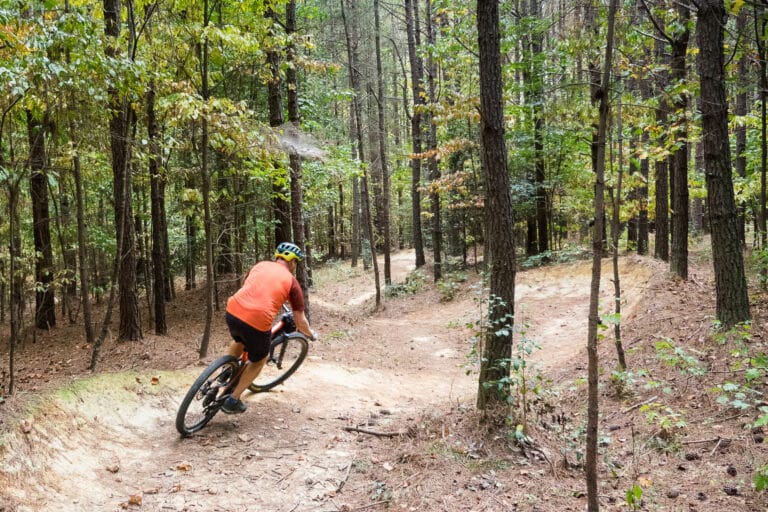 Is technology interfering with the wilderness experience?
Is technology interfering with the wilderness experience?
Even if you’re not a gadget geek, it’s nearly impossible not to be enamored with the growing number of electronic toys that keep popping up on store shelves. There’s that giddy sense of satisfaction you felt the first time your Global Positioning System (GPS) shaved 12 minutes off the morning commute. Or, you still can’t get over how your iPhone helped you find the best Thai food in Baltimore in under a minute.
Tech-savvy tools are also becoming more popular in the outdoors.
With a retail component that’s built on the next best thing—sleeping bags that weigh ounces, tents with inflatable poles that pitch themselves, and shirts that dry in seconds—it’s no wonder the outdoor industry is hungry for the coolest new gizmos.
For $600 you can buy a Garmin handheld GPS that will pinpoint your location on any trail in the U.S., give you your exact elevation, take your picture at the summit, and e-mail the hike data and glory shot to a buddy. There’s also a Suunto watch that will tell you when a storm is coming, and a waterproof high-definition video recorder that attaches to your boat or bike helmet.
SPOT personal satellite trackers—$150 locator beacons—allow loved ones to track your progress on the trail. In a backcountry bind, the devices have a 911 button that sends out an emergency signal via satellite to call for help.
Region-specific programs are being developed for these gadgets too. An iPhone application recently released for the Blue Ridge Parkway enables travelers to track their mile-by-mile progress, find overlooks, and view elevation profiles. There are also apps for Shenandoah and Great Smoky Mountains National Parks. Last year, Shenandoah National Park went a step further and introduced a GPS Ranger program. The $10-a-day, pocket-sized electronic units guide visitors on four different hikes, including a route to the summit of Hawksbill and a stretch on the Appalachian Trail to Tanners Ridge. The devices even talk to hikers, pointing out interesting sites.
Alas, the navigational skills of Boone and Bartram have seemingly been replaced by Garmin and Steve Jobs. But as gadgets get smarter, are they diminishing the mystery and adventure of exploring the outdoors?
Park Rangers have observed growing numbers of problems with people relying exclusively on electronic gadgets to navigate the wilderness. An extreme case came this past spring when a 43-year-old British man let his TomTom GPS lead him on a dirt road short cut in the English countryside. Robert Jones’ BMW ended up on a narrow ledge before plowing through a fence and stopping just before the edge of a 100-foot cliff. Jones’ car had to be towed to safety, and he was fined the equivalent of nearly $4,000 for careless driving.
 In mid-September, a trio of hikers was three miles into a nine-mile trek along the Colorado River in the Grand Canyon when they decided to stop and camp for the night. At 1:30 a.m., one of the novice hikers heard a more experienced companion making “odd respiratory noises” as he slept. Also alarmed that the group had run out of water, the hiker hit 911 on her SPOT tracker before heading back into her tent for some sleep. Her distress signal was sent all the way to the GEOS Emergency Response Center in Texas. At daylight the National Park Service sent help by foot and helicopter, only to find all three campers sleeping peacefully in their tents.
In mid-September, a trio of hikers was three miles into a nine-mile trek along the Colorado River in the Grand Canyon when they decided to stop and camp for the night. At 1:30 a.m., one of the novice hikers heard a more experienced companion making “odd respiratory noises” as he slept. Also alarmed that the group had run out of water, the hiker hit 911 on her SPOT tracker before heading back into her tent for some sleep. Her distress signal was sent all the way to the GEOS Emergency Response Center in Texas. At daylight the National Park Service sent help by foot and helicopter, only to find all three campers sleeping peacefully in their tents.
“A lot of these electronics have become susceptible to abuse in the outdoors,” says Andy Nichols, who has dealt with similar situations as a mountain rescuer in Shenandoah.
But the SPOT tracker has also been a lifesaver, too. Just one day after the Grand Canyon incident, the device helped rescue a 65-year-old man who had fallen 20 feet in Washington’s Olympic National Park and needed to be airlifted.
With public land management agencies dealing with billion-dollar shortfalls, unnecessary distress calls are compounding their budget woes. Because it’s impossible to know when someone is prematurely seeking help, many have suggested a mandatory fee for electronic distress calls—just like an ambulance charge for a patient.
“These devices have their place on extreme expeditions,” says Nichols. “But I see too many people in the Blue Ridge relying on expensive gadgets instead of learning skills.”






